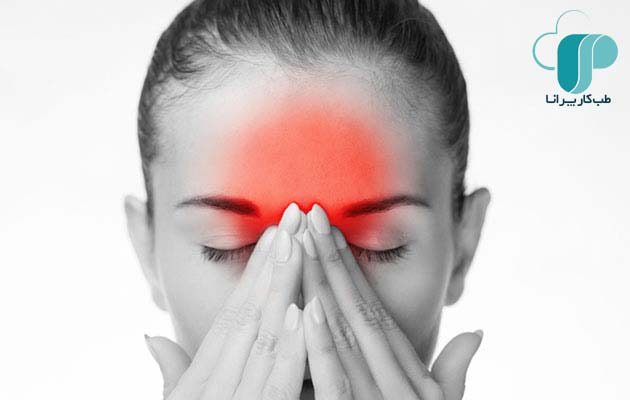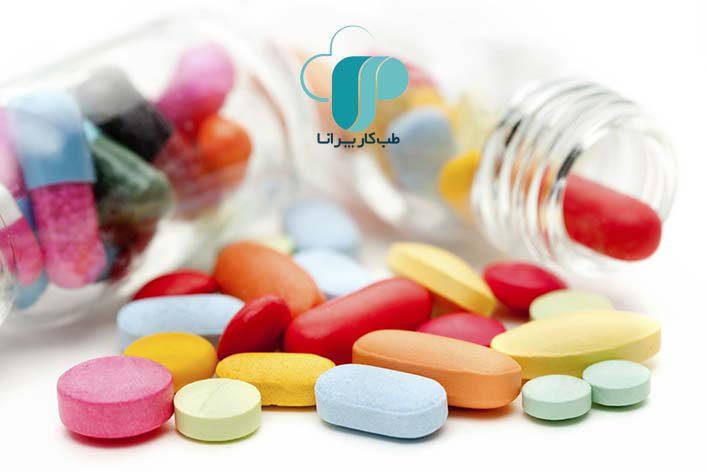"Migraine headache" is a severe type of headache that can lead to severe throbbing pain or a pulse sensation on one side of the head. In addition, migraine symptoms often include nausea, vomiting, and extreme sensitivity to light and sound. Migraine attacks can last from hours to several days. Often the pain is so severe that it interferes with daily activities. For some people, there may be warning signs of a migraine. Symptoms of migraine at this stage can include blurred vision or other problems such as tingling in one side of the face, arm or leg, and difficulty speaking. At the beginning of the employment and periodic examinations of occupational medicine, it is often observed that employees are suffering from migraine headaches for various reasons, including work stress and pressure. In this article, we will explain in detail about the symptoms of migraine headache, prevention and treatment of migraine.

Types of migraines
Classic migraine
Classic migraine is usually a unilateral headache and occurs in a pulsating manner. Before the onset of the headache, the patient experiences vision changes in the form of hallucinations and sparks of vision, which are called "auras". Most patients experience an attack during the week and usually lasts between 2 and 24 hours. The patient experiences conditions such as nausea, vomiting, light-headedness, lethargy, and sometimes in the acute stages, sensory disturbances in the body and speech. There are no headaches or other discomforts between attacks.
Normal migraine
In normal or non-classical migraines, there are no visual symptoms before the attack. This type of headache is mostly bilateral and pulsating. The pain is felt more around the eye ring and may be followed by stiff neck. This type of migraine is more common and is accompanied by nausea and vomiting.
What is the difference between migraine headaches and common tension headaches?
In people with migraine headaches, there is a throbbing and deep pain, while tension headaches are accompanied by pressure on the head or around the neck. The position of pain is in migraine headaches, behind the head or close to the eyes and on one side of the head, while in tension headaches, pain is reported throughout the forehead and head or in the neck. The severity of pain in migraine headaches is such that people who have a migraine attack usually lose the ability to do daily tasks or focus on things. While tension headaches are usually mild.
Migraine headaches usually last a long time, while tension headaches improve in a short time. Migraine headaches include nausea, vomiting, and upset stomach, which are not experienced in tension headaches. 1 to 2 days before the onset of migraine, symptoms such as constipation, depression, diarrhea, hyperactivity, irritability and stiff neck are observed, which are not present in tension headaches.
Migraine's causes
The blood arteries that supply the scalp and brain narrow, then dilate, causing inflammation. When the arteries dilate again, a headache develops. Migraines can be caused by shifts in sleep patterns, staying up late at night, working too hard, or becoming overly exhausted. Menstruation is sometimes blamed for these headaches, and birth control medications are thought to play a role in the development of migraines. Migraines can be triggered by loud noises, bright lights, music concerts, neck pressure, and even toothache.
Factors affecting migraine headaches
- Stress
- Family history of migraine
- smoking
- alcohol consumption
- Taking many medications
- Lack of sleep and in some people too much sleep
Signs and symptoms of migraine
Pre-sign stage
Migraine symptoms may start one to two days before the headache itself. This stage is known as the precursor stage. Symptoms of this stage may include the following:
- Intense craving for food
- Depression
- Fatigue or low energy
- Frequent yawning
- ADHD
- Irritability
- Neck stiffness

Attack phase
Symptoms of the attack phase can last from hours to days and may vary from person to person. Some symptoms may include the following:
- Increased sensitivity to light and sound
- Nausea
- Dizziness or feeling weak
- Pain in one side of the head, left or right or front or temple
- Pulsating headache and tingling sensation
- Vomiting
After the attack phase, the person often experiences a post-traumatic phase. During this phase, changes in a person's mood and emotions usually occur. These changes can range from feelings of extreme happiness to feelings of tiredness and lethargy. Mild and dull headaches may also persist. The length and severity of the headache in these phases can vary from person to person. Sometimes it may jump from one phase to another and a migraine attack may occur without causing a headache.

Prevention of migraine headaches
Until recently, researchers considered avoiding the factors that cause migraines as the best way to prevent the onset of these attacks, but avoiding some of these factors is not possible in practice, and also this avoidance is not always effective. Therefore, lifestyle changes can be an effective deterrent to the onset of these attacks. The most effective ways to prevent migraine attacks are having a regular pattern of sleep and nutrition, stress management, regular aerobic exercise, avoiding weight gain and not taking steroid drugs. So:
- Reduce stress in your life as much as possible.
- Taking certain medications can help prevent seizures in some people.
- Avoid the factors that trigger migraine headache attacks if possible.
Migraine treatment
Diagnostic tests are not usually needed, but blood tests or CT scans may be done to rule out other conditions. When the first signs of a migraine attack appear, put a cold cloth or ice pack on your head, or cool water on your face. Lie down in a dark, quiet room for several hours. Place two pillows on either side of your head to keep your head from shaking. If possible, try to sleep. Minimize noise, light and smells (especially smells from cooking and smoking).
Result
As mentioned above, migraine headache is a type of headache that is very severe and annoying. But keep in mind that migraines are not limited to headaches. Risks of migraine include complications such as the possibility of stroke and heart problem. Fibromyalgia, depression, anxiety and some other illnesses are other risks of migraines. Therefore, it is better to check for migraine symptoms if you see any symptoms and find the cause by consulting a specialist to prevent the dangers that threaten it. It is also worth mentioning that these examinations are performed in Prana Occupational Medicine Center and if necessary, a specialist doctor is referred. Contact us for more information through the following communication channels.

 icons at the top right corner of the subsection.
icons at the top right corner of the subsection.